Copyright 2005 -- Rachel Saunders
|
Agra: Fort & Baby TajRight: Itimad-ud-Daulah (Baby Taj) standson the bank of the Yamuna river and is the tomb of Mirza Ghiyas Beg, the Persian chief minister for Jehangir and future father-in law of the emperor Jehangir. The tomb was constructed by Nnur Jehan, Mirza's daughter between 1622 and 1628. --> Previous --> Next --> Home --> More Adventures --> India Index |
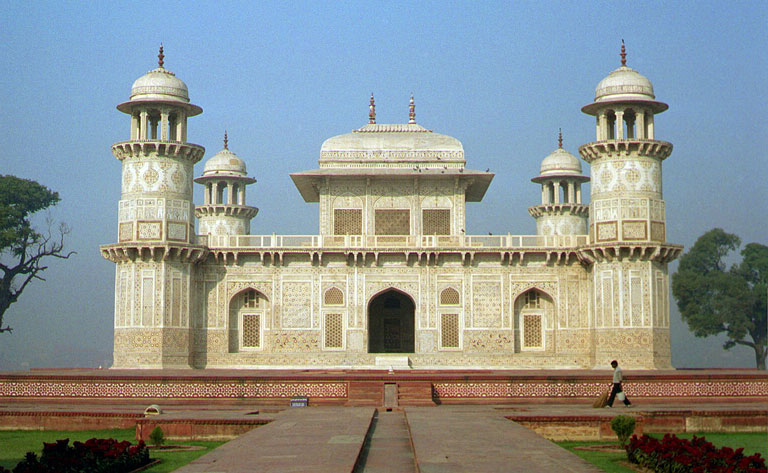
|
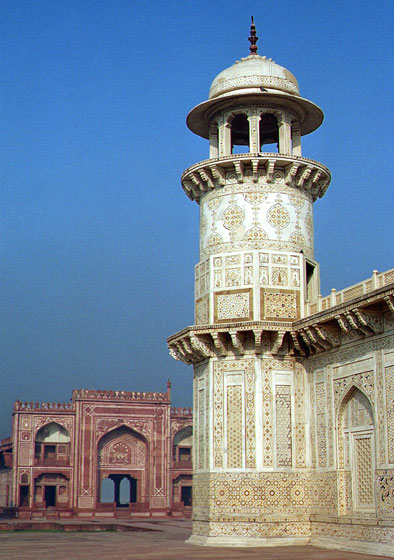
|
Left: Although less elaborate, the Itimad-ud-Daulah has many design elements that foreshadow the Taj Mahal. It was the first Mughal structure to be built entirely out of marble. The tomb features fine marble latticework passages and ornate inlaid stone work. November
11, 2004 Journal continued: |
Journal
continued: Right: A man
works on replacing some of the broken stones for the exterior of the
Baby Taj. I believe that this is the same way that they used to cut
marble back in 1628 as well. |
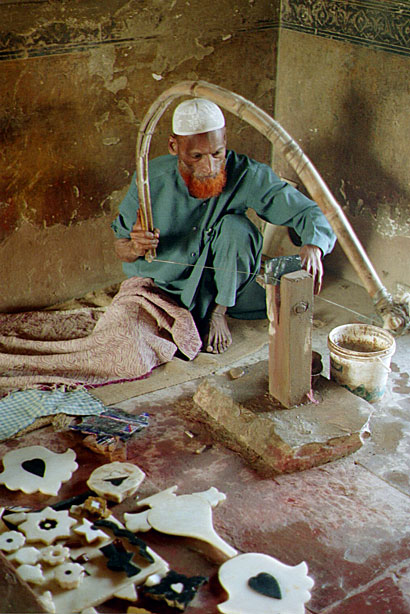
|
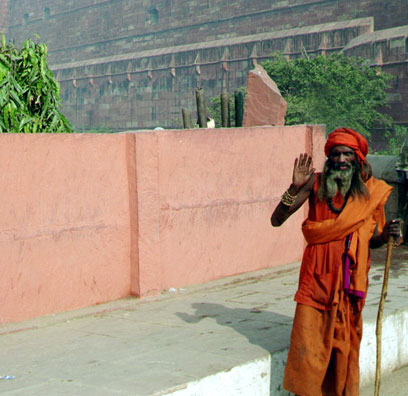
|
Journal
Continued: I have also been wearing the Salwar Kamiz, the typical indian dress which is almost as common as a sari. Since I am later going to visit a very traditional village, and will need one there, and for the ease of packing, I didn't bring much else. So mostly I will be wearing this. And now that I have seen the reaction, I am glad that I am. Women, when they see me, run up to me and thank me for wearing the dress and compliment me and invite me to come to their village. I wonder if everyone gets this same reaction, because there are plenty of tourists around here. I am definitely not the only one. |
Above: Outside of the fort, a travelling holy man awaits a few rupees. Evidently, with this type of holy man, clothes are optional. I am glad he chose to wear a little something. Right: Diwan-i-khas (the hall of private audiences). This is where the shah held all of his private meetings. This beautiful hall is deep inside the fort and very peaceful.
|
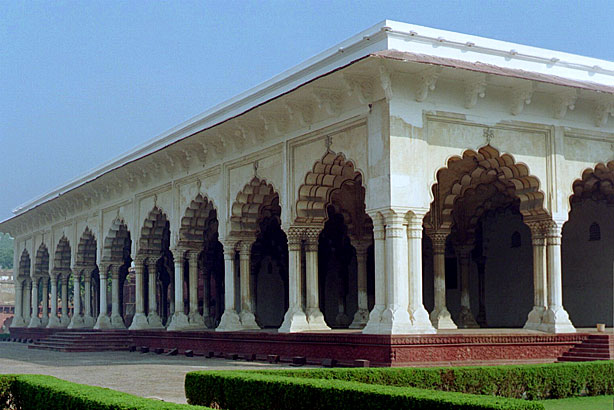
|
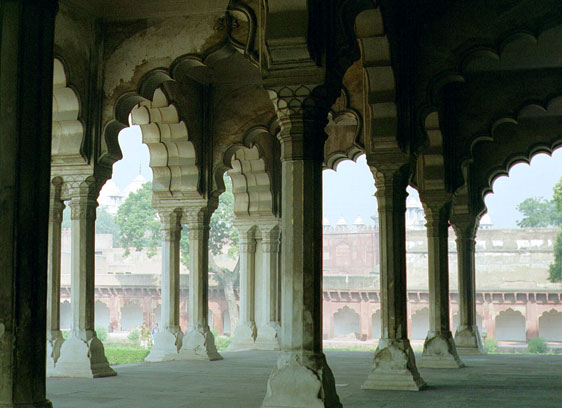
|
Construction of the fort along the bank of the Yamuna river was begun by Akbar in 1565. Additions were made up until the rule of his grandson, Shah Jahan. The fort was built primarily as a military structure, but during Shah Jahan's time, it was upgraded to a palace. This was ultimately Shah Jahan's prison as well, when Aurangzeb overthrew his father in 1658. Left: Under the columns of the Diwan-i-khas. |
| Right: An important element of any fort is of course the Mosque. This is a little mosque for the ladies I believe. Or at least that is what I was told. The women of the palace didn't have many places to go, so here they would pray. | 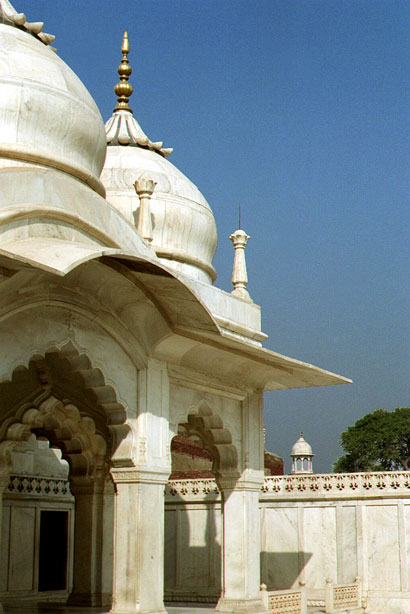
|
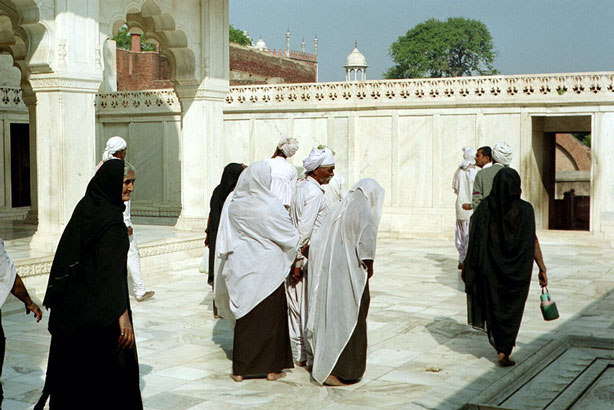
|
Left: Tourists from other regions of India come to Agra to visit the fort and the Taj. I was very pleased to see what great company I was in as a tourist. |
| Right: Some fine gentlemen from distant lands... or just another state in India. I love the outfits. | 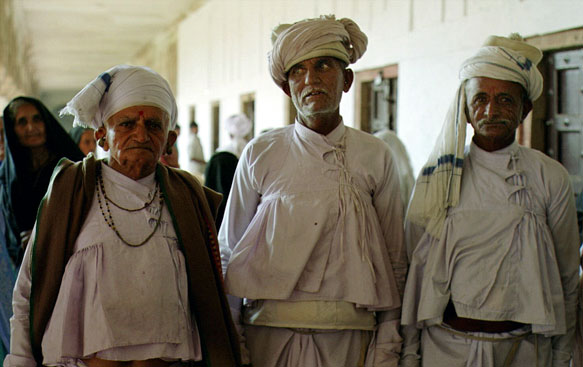
|
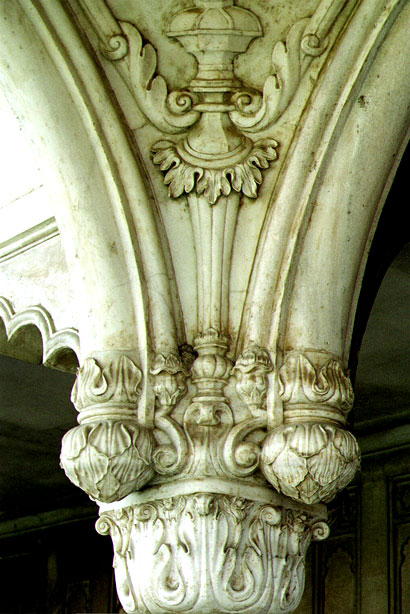 |
Left: A marble column. The fine carving is everywhere the eye can see. Sometimes you have to focus on the small stuff to appreciate what the big stuff really is. |
| Right: More tourists. I don't know what this guys story is, but I love the color scheme. He didn't seem to mind posing for my photo. A fact for which I am very glad. | 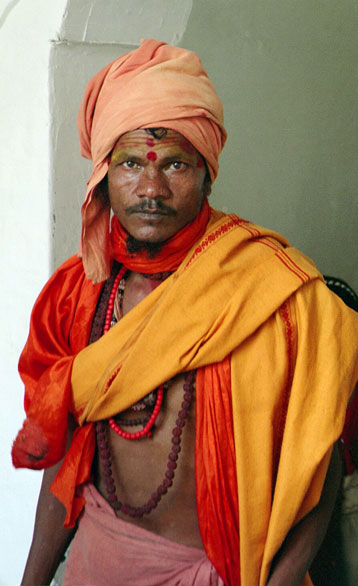
|
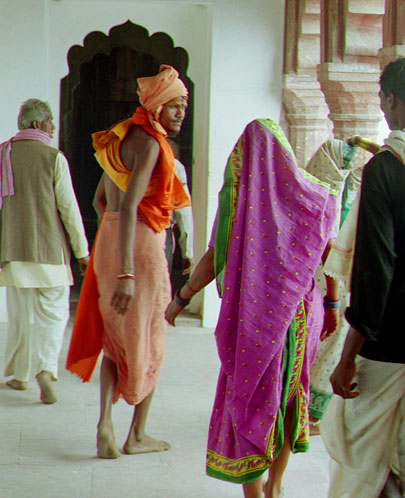
|
Left: Tourists enjoying their little tour of the fort in Agra. |
| Right: The balcony which was part of the fort and palace built by Shah Jahan. This was ultimately the only view of the outside world that the Shah got after he was overthrown by his loving son Aurangzeb. One little bit of mercy-- from the balcony, the Shah could see the Taj Mahal where his beloved wife (for whom he built the tomb) was laid to rest. Unfortunately, you can't see it now... the smog gets in the way. What a pity! --> Previous |
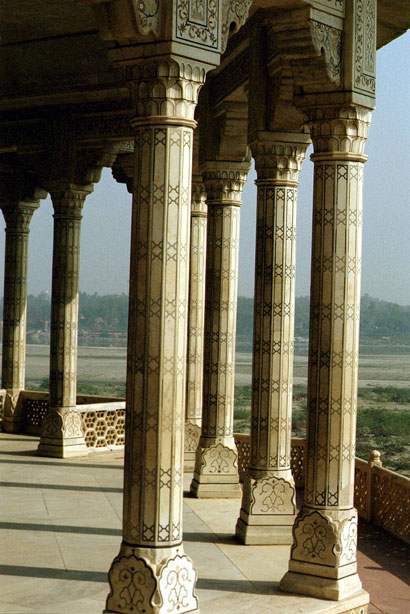
|